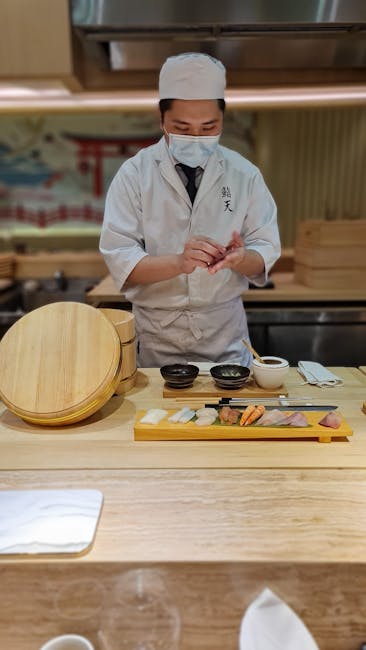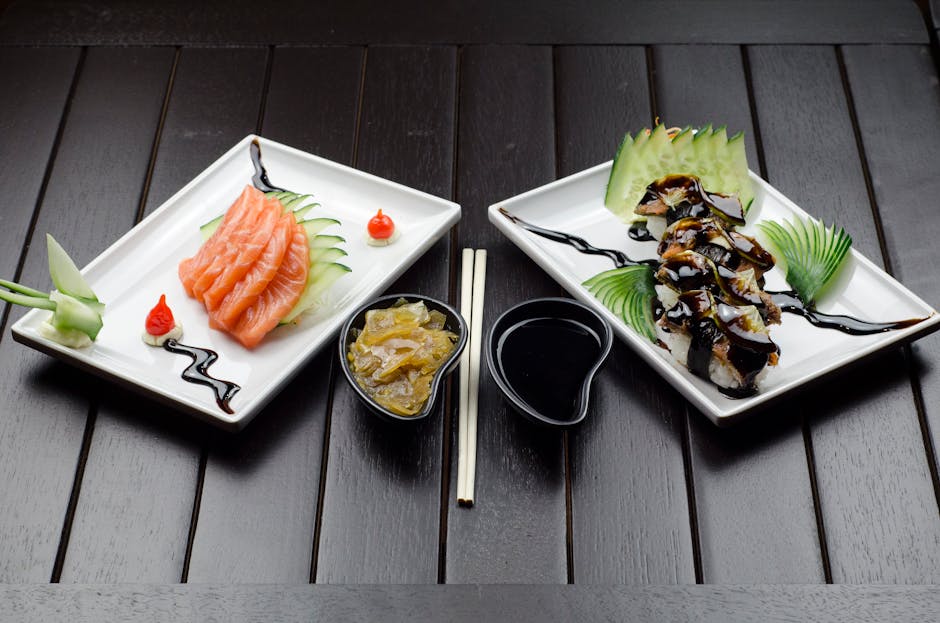Puffer Fish: The Delicacy That Could Be Your Last Sushi Bite
Puffer Fish: The Delicacy That Could Be Your Last Sushi Bite
The allure of fugu, the Japanese name for puffer fish, is undeniable. This enigmatic creature, known for its exquisite taste and potentially lethal toxicity, holds a unique position in the culinary world. A single, improperly prepared fugu sashimi can be a deadly gamble, a fact that adds to its mystique and makes it a dish reserved for highly skilled chefs and adventurous diners.
The Deadly Delicacy: Understanding Fugu’s Toxicity
The danger associated with fugu lies in its potent neurotoxin, tetrodotoxin (TTX). This toxin is present in various parts of the fish, particularly the liver, ovaries, skin, and intestines. Tetrodotoxin blocks sodium channels in nerve cells, preventing the transmission of nerve impulses. This can lead to a cascade of symptoms, beginning with numbness and tingling in the mouth and extremities. As the toxin takes hold, paralysis sets in, eventually affecting respiratory muscles and causing death by asphyxiation. There is no known antidote for tetrodotoxin poisoning.
The potency of the toxin is staggering. Even a tiny amount can be fatal, and the symptoms can manifest rapidly, leaving little time for intervention. This is what makes the preparation of fugu such a highly specialized and regulated practice.
The Skill and Training of Fugu Chefs
Only licensed chefs, who have undergone years of rigorous training, are legally permitted to prepare and serve fugu in Japan. This rigorous training involves a comprehensive apprenticeship lasting several years, focusing on the precise identification of toxic parts, meticulous cleaning techniques, and an intricate understanding of the fish’s anatomy. The process is not merely about removing the toxic organs; it requires a deep understanding of the fish’s physiology and the potential for residual toxins.
The licensing process itself is incredibly demanding, featuring a series of challenging examinations covering every aspect of fugu preparation. Chefs must demonstrate an unwavering precision and attention to detail, ensuring the complete removal of all toxic elements. Failure to meet these rigorous standards results in license revocation, highlighting the severity of the potential consequences.
The Culinary Art of Fugu Preparation
Preparing fugu is an art form in itself. The chef’s skill is not only demonstrated in the safe removal of the toxins but also in the presentation of the final dish. Fugu is often served as sashimi, thinly sliced raw fish, showcasing the pristine quality and delicate texture of the flesh. Other preparations include fugu chiri (hot pot), fugu karaage (fried fugu), and fugu zosui (fugu rice porridge).
Each preparation requires specific techniques to ensure both safety and optimal flavor. The chef’s expertise lies in balancing the delicate balance of risk and reward, offering a culinary experience that is both thrilling and delicious. The precise slicing, the artful arrangement, and the overall presentation all contribute to the overall dining experience.
Beyond the Sushi Bar: Puffer Fish in Culture and History
The puffer fish holds a significant place in Japanese culture, transcending its culinary significance. Its image appears in various forms of art, literature, and even folklore. The inherent risk associated with consuming fugu has contributed to its legendary status, making it a symbol of both bravery and culinary mastery.
Historically, fugu was a food primarily enjoyed by the elite classes in Japan. Its high cost and inherent risk made it a status symbol, showcasing both wealth and audacity. Over time, its consumption became more widespread, yet the strict regulations surrounding its preparation have always remained.

The Legal Framework Surrounding Fugu
Japan has stringent regulations governing the preparation, distribution, and sale of fugu. These regulations ensure the safety of consumers and the responsible handling of this potentially deadly fish. The licensing process for fugu chefs is exceptionally rigorous, involving extensive training, testing, and continuous monitoring to maintain standards.
These measures are vital, considering the high stakes involved. A single lapse in safety procedures could have fatal consequences. The regulations are not simply bureaucratic hurdles; they are a critical component of ensuring public health and safety.
The Allure and Risk: A Balanced Perspective
The popularity of fugu in Japan and beyond stems from a combination of factors. Its unique flavor profile, its exquisite texture, and its association with risk all contribute to its alluring mystique. The dish represents a culinary adventure, a testament to the skill of the chef, and a testament to the willingness of the diner to embrace a certain level of risk.
However, it is crucial to remember that the potential consequences of improperly prepared fugu are severe. There is no room for complacency or shortcuts. Anyone considering eating fugu must be fully aware of the risks involved and should only consume it at reputable establishments where licensed chefs adhere to strict safety protocols.

Choosing Safety Over Excitement
While the allure of fugu is undeniable, safety should always be the paramount consideration. Diners should never compromise on the quality and reputation of the restaurant or the qualifications of the chef preparing the dish. Choosing a reputable restaurant and understanding the risk associated with the dish is paramount.
This involves researching the restaurant’s reputation, verifying the chef’s license, and asking questions about the preparation process. Never hesitate to inquire about the sourcing and handling of the fugu, ensuring the establishment maintains the highest safety standards.
The Future of Fugu: Balancing Tradition and Safety
The tradition of fugu preparation in Japan is a testament to the enduring relationship between culture, culinary arts, and risk management. As the dish gains popularity globally, it’s crucial to balance the cultural significance of fugu with the imperative to maintain safety standards.
This requires international collaboration to ensure consistent regulation and training standards. Sharing best practices and ensuring that chefs worldwide adhere to rigorous safety protocols is essential to prevent accidental poisonings.
Continued research into the toxin itself and the development of potential antidotes could also alleviate the risks. While a cure remains elusive, ongoing scientific inquiry could lead to breakthroughs that further enhance the safety of fugu consumption.

Conclusion: A Delicate Balance
The puffer fish, with its deadly toxin and exquisite taste, represents a unique culinary challenge. It embodies the delicate balance between risk and reward, tradition and safety. While its allure is undeniable, responsible consumption requires a deep understanding of the risks involved and a commitment to choosing reputable establishments with licensed and highly skilled chefs. The future of fugu hinges on the ability to maintain this delicate balance, ensuring that this enigmatic delicacy can continue to be enjoyed safely for generations to come.





